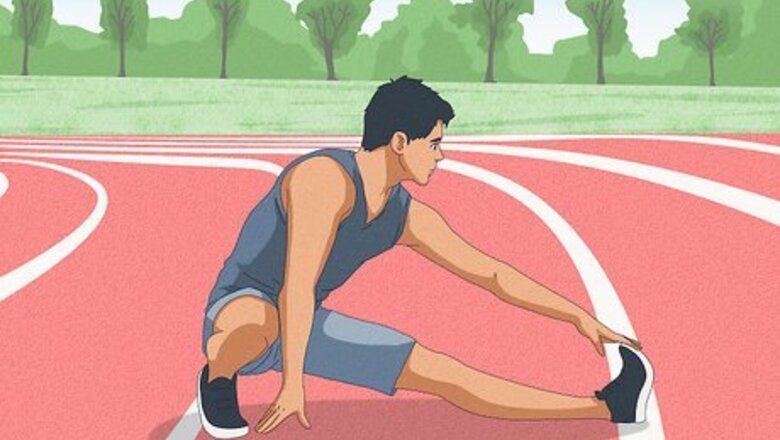
views
Warming Up
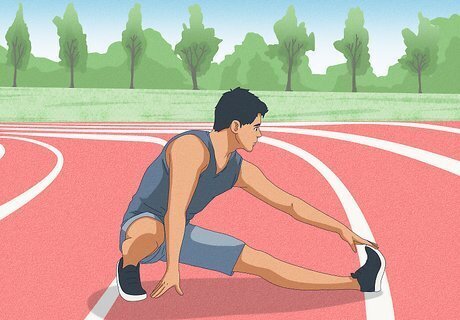
Begin with stretching exercises. Loosening up your muscles before you jump will prevent injuries or cramping later on. Stretch for around one or two minutes before practicing triple jumps, especially if you haven't practiced for several days. Don't just stretch your legs: stretch your arms, back, shoulders as well. Plan on three or four stretches, while holding each between 15-20 seconds.
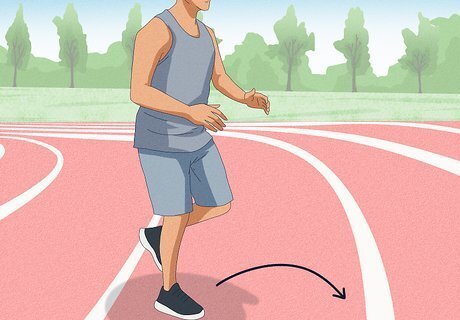
Practice single leg-hopping. Single leg hops are a good way to strengthen control over your leg muscles. Lift one leg behind your back, heel up, and begin jumping with the other. Make sure to land on the ball of your foot rather than the heel. Continue jumping rhythmically on one foot, then switch to the other after a set time. This is one set. Finish two or three sets before you begin the triple jump and don’t forget the pattern step, skip, jump. You can also jump rope to practice your final landing.

Try high knees. For good form during your triple jump, you will need flexibility to lift your knees parallel to your hips. To perform high knees, lift one knee as high as it will go, then switch to your other knee. The movement should look like an exaggerated march. Move down a small stretch of track (between 15-20 meters) while you practice high knees to warm up your glutes and hip flexors. Increase the speed of this exercise to make it more challenging (like you're sprinting in place). You can also change up this exercise by wrapping an exercise loop or band around your feet.

Do jumping drills. Drills incorporate the fundamentals of the triple jump before you start practicing. Practice at least one or two jumping drills to get your body in exercise mode. Choose your daily drills based on your weaknesses. Hopping drill: Try hopping up stairs or around orange cones. Stepping drill: Practice a series of "hop-steps" with each hop-step progressively longer. Jumping drill: Stand with both feet together next to the sand pit and jump in and out of the pit with your feet together.
Hopping, Stepping, and Jumping

Run up to the board and jump. This will begin the first phase: hop. Generally, you will want to use your dominant foot. Get a running start (lasting about 17-18 strides) so you can forcefully jump off the board. Pull your opposite foot up behind you. Make sure not to run beyond the board during your hop, as doing so is considered a foul. For the hop and skip, you will begin your jump with the same foot.

Keep your arms extended in front of your body. While you are airborne during the hop, skip, and jump, never let your hands drop lower than your chest or higher than your chin. Move both arms forward, as if you are grabbing something in front of you. If your arms are too high, you are more likely to fall out of position when you hit the ground. Don't position your arms behind your back. Doing so will slow you down during takeoff and landing.

Hit the ground with your foot flat. During the hop and step, you will land with your dominant foot flat or roll from heel to toe. Do not put too much pressure on either your heel or toes. Once you've touched the ground, roll forward onto the balls of your feet and prepare for the step.

Start your step with the same foot. Again with your dominant foot, jump with your back leg extended behind the body. You will keep your your back leg's heel up to prepare for the landing. Land with your back leg forward to complete the step and prepare for the final phase: jump. Keep your knee high and parallel to your hips for correct form. For the step, your goal is to get off the ground as soon as possible.
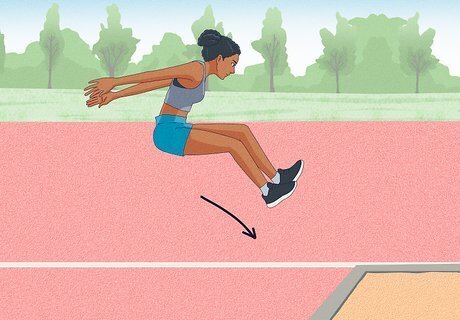
Begin the final phase (jumping) with your opposite foot. During the jump, you will leap with your opposite (formerly back foot). By this point, you will be close to the sandpit. Bring both feet together with your knees parallel to your chest as you jump into the pit. Unlike the first two steps, land the jump with your heels first.
Improving Strength and Endurance
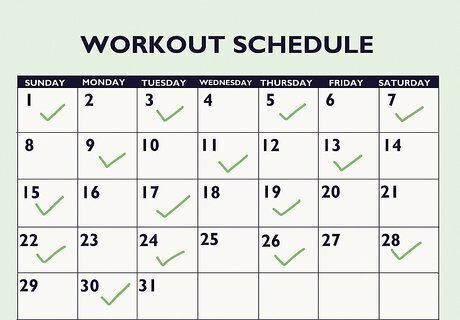
Train at least three or four days a week. The key to building strong leg muscles is frequent training sessions. If you're on a track and field team, you probably have opportunities to practice every week. If not, however, work out independently several times a week. Rotate the muscle groups you train. Build workout regimes over specific groups like your legs, chest, biceps, or stomach.
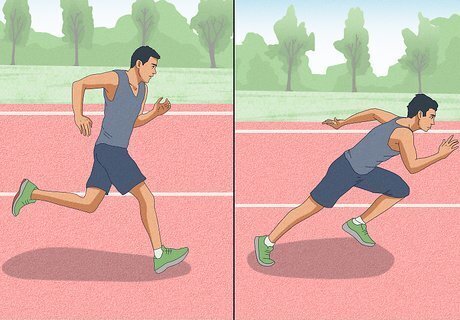
Try interval training. Interval training improves both leg speed and endurance simultaneously. First, warm up by running at a moderate pace for a few minutes. Then, run at your maximum speed for one or two minutes. This is your first interval. Repeat this with three or four more intervals, each one interspersed with running for several minutes at a moderate pace. Pushing yourself too hard is common during interval training. If you feel weak or excessively sore for several days after workouts, take a break from interval training for a week. After every interval training, cool down by walking briskly for about five minutes. This will help slow down your heart rate. Recovery is just as vital as the actual workout.

Start weight training. Triple jumps require tons of bodily control, and weight training is a great way to gain stamina. Plan a weight training exercise day one or two times a week. Start with light weights, like dumbbells, and move onto larger weights as you get stronger. While working with weights, you can do squats, push-ups, planks, or sit-ups. Overexerting yourself with weights can result in knee or back injury. Work your way up to heavier weights gradually. Don't just put pressure on your lower body. Upper body strength is also important for ideal triple jumping form.

Cross-train. Training for triple jumps involves more than just running and jumping. Your body will be strongest if all of your muscles are in shape. Spend one or two days a week working out other muscles and giving your legs a rest. Swimming is popular among triple jumpers because it relieves pressure on the legs while still getting cardio.
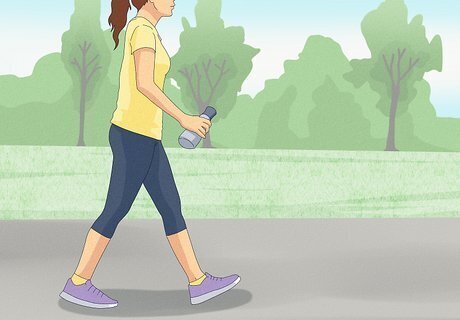
Add a day of light exercise into your weekly regimen. Rest days are important for muscle recovery. Your muscles will not have time to repair themselves if they are overworked every day. Put one or two days of light exercise to your weekly schedule. On rest days, you could walk, do yoga, or go on an easy hike.


















Comments
0 comment